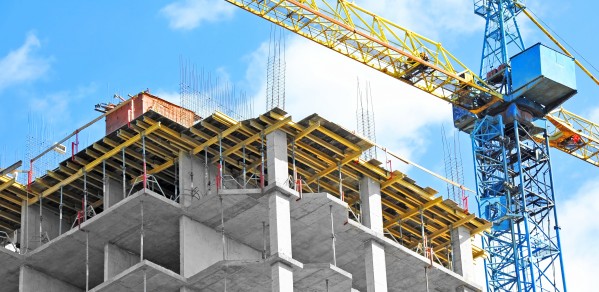
The University of Cambridge has collaborated with UK structural engineering consultants, Price & Myers to develop PANDA (Parametric And Numeric Design Assessment) software that can save up to 40% of embodied carbon on new build construction.
Very early stage decisions are responsible for much – nearly all – of the “useless” embodied carbon, useless in the sense that another design providing the same value was available for less carbon and/or less cost.
Dr Cyrille Dunant Senior Research Associate in Material Efficiency in Construction at University of Cambridge
Funded by the British government through Innovate UK, PANDA software can assess the embodied carbon in thousands of design options at concept stage, allowing clients and their project teams to make informed decisions on construction and materials. ‘We’ve been working with the University of Cambridge on the software for over five years,’ Partner at Price & Myers, Ian Flewitt points out. ‘It’s serious bit of kit.’
Flewitt outlined the scale of the challenge and the importance of tackling embodied carbon in construction. ‘Around 40% of the UK’s total carbon emissions come from the built environment,’ he explains. ‘As an industry, we’ve made great strides in reducing operational carbon production in buildings, that which is produced by things like the lighting, heating and cooling, and technology.’
‘Up to 50% of any new build’s emissions are embodied carbon – the carbon that’s emitted in the creation of the building’s fabric. That percentage will only rise as operational carbon emissions come down,’ Flewitt warns. The development of PANDA is a response to this challenge.
PANDA from Price & Myers on Vimeo.
With the government’s carbon target of net zero by 2050 on the horizon, it’s imperative that inroads are made to reduce embodied carbon before it makes it into buildings. PANDA is a leap forward in that ambition. Senior Research Associate in Material Efficiency in Construction in the UKFIRES research programme, Dr Cyrille Dunant says that getting in early is the key. ‘Very early stage decisions are responsible for much – nearly all – of the “useless” embodied carbon,’ he says. ‘Useless in the sense that another design providing the same value was available for less carbon and/or less cost’.
Dr Dunant notes the difficulty in making informed decisions about embodied carbon before the development of PANDA. ‘In the past these decisions have been frequently made blind. The impact was difficult to calculate, and therefore the trade-offs difficult to assess. PANDA works very quickly, so can be used to explore options at the right moment’.
Design parameters can be changed in real-time, allowing the design team to watch and immediately see the impact of individual changes on the structure’s embodied carbon. When grid spacing is changed, loads on the building’s structure are altered, different materials are chosen, or the floor depths are manipulated, the impact on embodied carbon is immediately seen.
The benefits of PANDA are substantial – and not just for the environment. It also has the potential for savings in material costs too because it identifies where any given design sits in relation to both optimum cost and carbon saving. And crucially, this is all done before the initial building scheme is finalised. Construction Consultant, Gardiner & Theobald has created a fully- costed material model for PANDA.
Dr Dunant and his team made a study on 30 structures from Price & Myers and others at all stages from early design to as built, showing that choosing the optimal decking solution could have saved an average of 25% of the carbon and 15% of the costs. ‘This doesn’t mean the structures were poorly designed, quite the contrary,’ Dunant notes. ‘They are close to the optimum, but it was impossible before PANDA to explore the full range of possibilities’.
PANDA even has a fully functional soil model, so it can include a realistic foundation design as part of the decision-making process for any particular project.
By establishing its use early in the design process, project teams can progress knowing that their structures are already designed for maximum embodied carbon efficiency.
PANDA is an unparalleled industry tool with the ability to save huge amounts of embodied carbon in construction. Price & Myers is offering PANDA as a complimentary, valued-add to their existing engineering services. They can also be contacted to provide PANDA consultancy where another structural engineer has already been commissioned.

